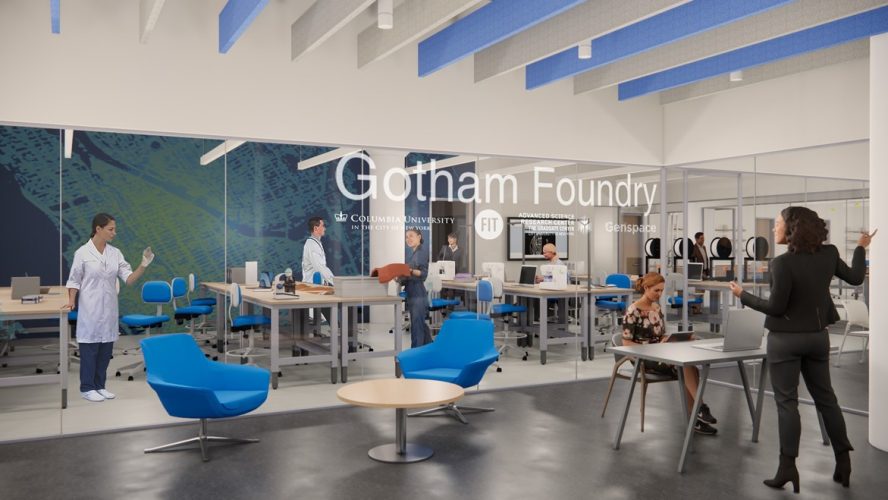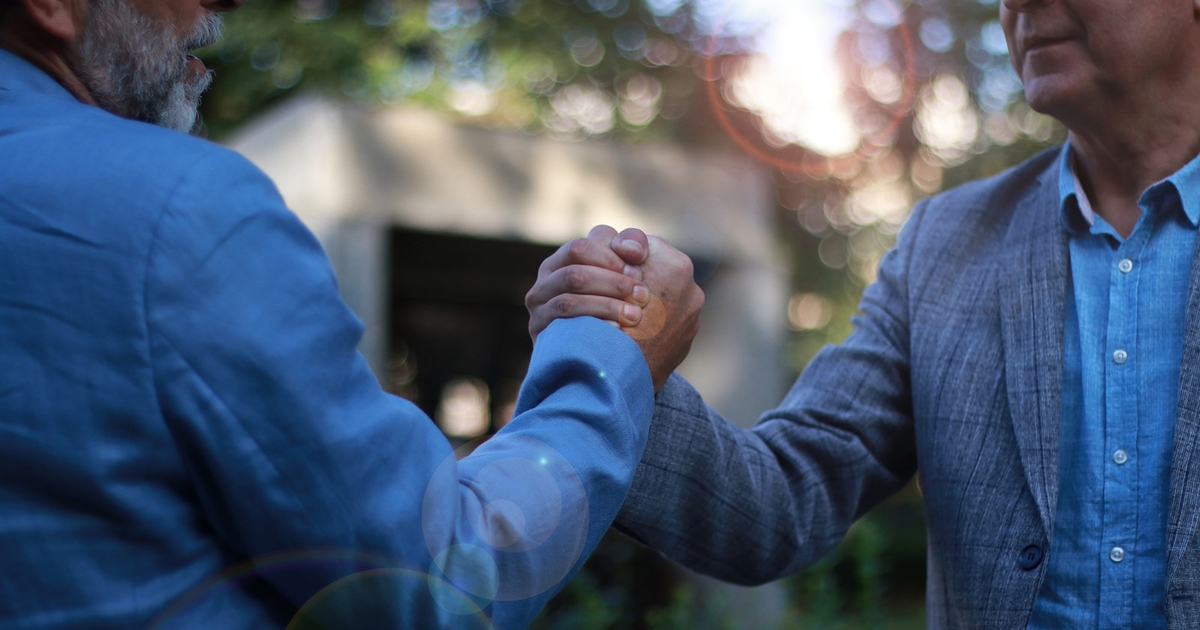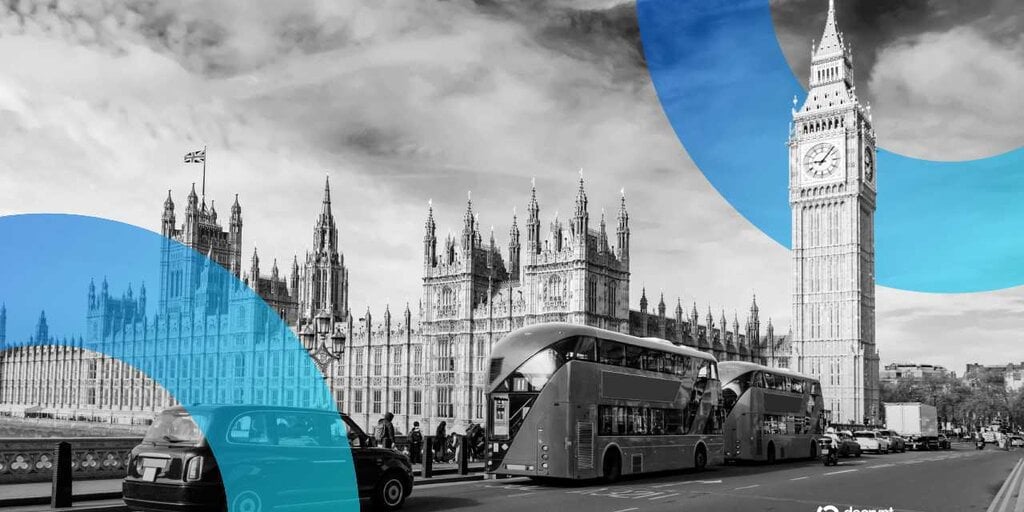How New York City is Reinventing Sustainable Materials

A worldwide shift in materials science is underway as innovators deploy new technologies to create sustainable products. With people growing more aware of the world’s waste and pollution problems, an expanding segment of consumers is looking for green attributes in the products they buy — choosing items that are biodegradable, are made from renewable or regenerative materials found in nature, and can be disposed of sustainably at the end of their life.
To source the materials they need to meet this demand, companies depend on scientists, innovators, entrepreneurs and investors at the forefront of the growing green economy. In New York City, a planned innovation hub called Gotham Foundry aims to attract and support the best and brightest in this field from around the world.
Gotham Foundry opened this September during Climate Week and is focused on leveraging biomaterial innovation to bring new businesses and materials to key New York City industries — like fashion and construction. It will support startups creating next-gen materials like biodegradable plastic alternatives and upcycled textiles while serving as a hub for biomanufacturing education and green workforce training.
A citywide initiative, Gotham Foundry is funded by $45 million from New York City Economic Development Corporation (NYCEDC). Located at Harlem Biospace on West 127th Street, it will be led by materials innovators at Columbia Engineering, the State University of New York’s Fashion Institute of Technology and the City University of New York’s Advanced Science Research Center, and Genspace, the world’s first community biology lab, located in Sunset Park.
New York strives to be at the forefront of the global green economy
While New York City does not have the space for the large “giga-factories” typical of manufacturing hubs in the Asia-Pacific region and elsewhere, the city offers innovators a creative and dynamic environment unlike anywhere else in the world. Not to mention direct access to investors in one of the world’s financial capitals, along with a supportive regulatory environment for sustainability innovation at both the city and state levels.
This confluence of factors creates the opportunity to build a collaborative, interactive network in support of sustainable materials research, said Maria Gotsch, president and CEO of the Partnership Fund for New York City. “Now we’re stitching the pieces together — let’s make this more of a strategic focus, let’s connect the dots in a more explicit way,” she said.
New York has already established itself as a global center for transformative innovation through initiatives including the BATWorks climate innovation hub, the AI Nexus, and the Urban Tech Hub at Newlab — which launched in 2016 with help from the Partnership Fund. “A lot of MIT graduates are coming to New York specifically for Newlab, because if you’re working in urban technology, you have a large concentration of people,” Gotsch explained. “All this makes New York an early-adopter market.””
New York fashion: Where science and creativity meet
The Gotham Foundry hub aims to supercharge New York City’s materials ecosystem to bring and commercialize New York’s legacy industries new, more sustainable innovations. The fashion industry in New York City continues to be the largest centralized area for fashion brands, designers, and manufacturers in the United States. With 1 in 3 fashion designers all residing in the New York metro area and approximately 65 million tourists shopping in the city’s iconic retailers, new material innovators and companies have an incredible opportunity to commercialize and experience growth faster than any other region. The industry also draws fashion technology innovators, R&D and production experts, marketing and advertising specialists, social media and content creators, as well as showrooms, sales and merchandising experts. The city understands the economic and cultural importance of this industry and has worked to develop a suite of programs to support it as well as other innovation sectors.
In 2013, NYCEDC and the Council of Fashion Designers of America partnered to launch the $6 million Fashion Manufacturing Initiative, part of an ongoing effort to support and invest in new technologies for the city’s garment sector. The Fashion Manufacturing Initiative has since grown into a $14 million advanced manufacturing and technology program in support of New York City garment manufacturers and the workforce.
“Every fashion capital thinks they’re the best, and they are at what they do, but I’m really excited about New York City’s openness to creative capital,” said Sara Kozlowski, vice president of program strategies and education at the Council of Fashion Designers of America. Kozlowski says Gotham Foundry will help fashion innovators sharpen their focus on materials reuse and recycling. “We’re in a new phase of how things are made: design for repair, design for disassembly, design for next life,” she explained. “We are in such an exciting time in the last decade. The pace of innovation is incredible. It’s particularly important to think about the interconnection of systems — we need systems to support the great materials we’re seeing.”
Indeed there’s no shortage of innovative materials popping up across the city’s garment space. The Brooklyn startup Kintra Fibers, for example, has developed a plant-based form of nylon that is biodegradable when disposed in controlled composting systems. Also based in Brooklyn, the alternative leather startup TômTex launched in 2020 with support from the CFDA. The company’s base material is chitosan, a naturally occurring fibrous sugar found in mushrooms, shellfish and other biogenic sources that the company makes into a leather-like textile. The CFDA also supports technology-centered improvements in circularity — including a fiber sorting system enabled by artificial intelligence (AI) in collaboration with eBay’s Circular Fashion Fund.
“This also encapsulates what we see at NYCEDC,” said Kidd Solomon, assistant vice president for innovation industries at New York City Economic Development Corporation. “Circularity provides opportunities for people to experience the ‘science-fiction’ of biomaterials beyond the lab and in their everyday lives.”
Rethinking the future of the built environment
From the Statue of Liberty to the Chrysler Building, New York is a city defined by iconic architectural landmarks. “New York is a showcase,” said Emily Majewski, co-founder of the bio-based building materials startup Phytostone.
Since the COVID-19 pandemic raised public awareness of how important well-designed indoor spaces are for our health, major cities like New York are in the midst of a healthy building revolution. Though the building industry tends to be risk-averse, innovators like Majewski are finding success in introducing new bio-based materials that are more sustainable and improve indoor air quality. Gotham Foundry aims to support them and the city’s construction industry as a living laboratory for biomaterials innovation.
“New York is in a very unique position. Especially since COVID, the understanding and appreciation for healthy indoor spaces has skyrocketed,” Majewski said. “Materials are now finally being recognized. After decades of being a fringe consideration, they are everything we interface with constantly. They are so ubiquitous we don’t even notice, but you cannot detach yourself from a material surface.”
According to a press announcement from NYCEDC: “Phytostone created Cast Carbon, biochar-enriched wall tiles that blend clays, minerals and agricultural waste into a compostable finish. The wall tiles are designed for modular installation and disassembly, storing carbon while elevating interior aesthetics. This fall, Cast Carbon is participating in NYCEDC’s Pilots at BAT program, which enables pilots to receive access to spaces and infrastructure at NYCEDC’s flagship waterfront asset BAT—a vital 60-acre industrial campus—and the MADE Bush Terminal Campus to test their technologies, develop their products, show viability for customers and investors, and tap into New York City’s economy, the ninth largest in the world.”
Majewski says her company’s signature product, is a good fit for New York, where the construction industry is constantly updating a “forest” of existing buildings as well as putting up new buildings. Access to a skilled workforce over half a million strong and a reliable, nearby supply chain for bio-based materials drew Majewski to New York to build her startup.
“New York City has such an incredible resource of buildings that need to be renewed and updated. The older buildings are competing with the newest ones, so it made a lot of sense for us to be there,” she explained.
She cites the city’s fashion industry, architects, and interior designers as key supporters of her company’s “lead with beauty” approach to developing new bio-based materials, aiming for a strong, visual-first impression that opens up conversations about cost, performance, sustainability, and ethical supply chains.
Founders like Majewski are among those recognizing that a tipping point in public sentiment has arrived, working in support of biomaterials innovators and investors. Momentum is poised to continue to build toward the more sustainable, circular and healthier bio-based economy envisioned by Gotham Foundry and its partners.
“Material health and bringing nature indoors is universal and bipartisan,” Majewski concluded. “No one will want to go back to unhealthy, damaging materials.”



Post Comment